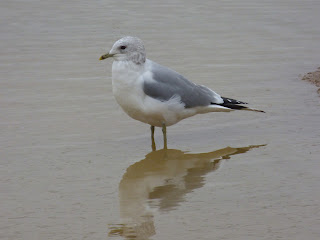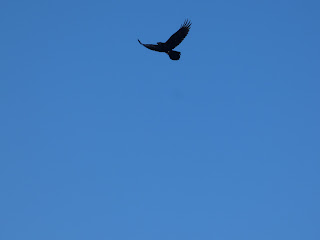The gulling season seemed to have dropped off a bit recently at Beddington, so I was pleased to see that two days ago there were finally a bigger number of large gulls. Along with the usual three Caspian Gulls (including the Czech ringed 1st winter '87AU'), four new ones showed up, taking my total for the day to 7 (my highest ever and new highest count for the Ebird hotspot!). They were also accompanied by 10 Great Black-backed Gulls (the highest this winter here), a Northern Herring Gull, some Common Gulls and a couple of ringed Black-headed Gulls found by Dave Warren. Sadly no Yellow-legged Gulls seen yet this year but hopefully that will change soon.
Ringed Black-headed Gulls: '2J84' above and '2J66' below
 |
| 1st winter Caspian Gull - a new bird that shows advanced post-juvenile moult with 2nd generation coverts (and a tertial too?) coming through. |
 |
| Usual 2nd winter Caspian Gull |
A regularly seen 1st winter Caspian Gull above and below
 |
| A new 1st winter Caspian Gull |
 |
| Another new 1st winter Caspian Gull |
 |
| The third new 1st winter Caspian Gull |
 |
| A rather smart looking 1st winter Herring Gull |
 |
| Adult Common Gull |
 |
| 1st winter Common Gull |
I also had this interesting immature gull with a noticeably dark mantle. I was hoping that maybe I had finally found a 2nd winter YLG, but on reviewing pics and asking for some more opinions, it appears to be a 3rd winter (white primary tips visible in first pic - thanks Dante) dark Northern Herring (Larus argentatus argentatus) or Herring x Lesser Black-backed hybrid. Sadly these are the only pics I managed to get, so hopefully someone can relocate the bird and get some flight pics to help confirm identification.
Other highlights included:
Red Kite, Peregrine, Raven, Skylark and Goldcrest (all year ticks), plus 42 Lapwing.
 |
| Lapwings |
Red Kite above and below
Raven below

































































